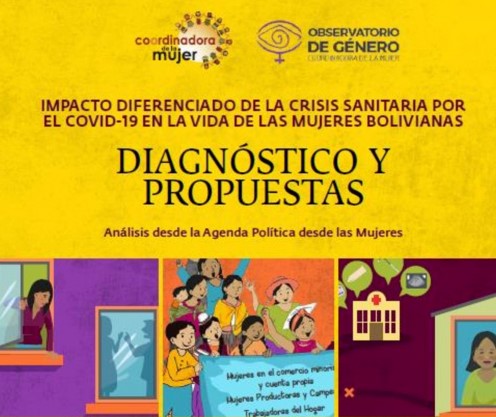
Race and gender stratification in the care sector
July 16, 2020
Impacto diferenciado de la crisis sanitaria por el COVID 19 en la vida de las mujeres bolivianas. Diagnóstico y propuestas.
August 24, 2020By Naomi Lightman
The disproportionate pandemic outbreaks within long-term care (LTC) settings in Canada have highlighted the ways that care work is socially and economically devalued, “dirty,” difficult, and particularly during times of pandemic, highly dangerous.
COVID-19 has laid bare the troubling realities within Canada’s LTC institutions, for both employees and residents, as well as their families and the broader community. As of May 25 2020, LTC facilities accounted for over 80% of Canada’s COVID-19 deaths, a tragedy that is attributable in part to a lack of adequate staff, personal protective equipment (PPE), and testing supplies. In some LTC settings, conditions are so bad that lawsuits have been filed, criminal charges may be laid, and the federal government has even deployed military assistance.
Immigrant and racialized women are overrepresented among personal support workers (PSWs) employed in LTC settings across Canada. As prior research has noted, these workers are especially vulnerable due to the front-line nature of their employment, as well as their gender, citizenship status, race, and/or class. In Canada, LTC workers are often underpaid compared to their hospital counterparts, and many have no choice but to work at multiple part-time jobs with limited benefits.
In the short-term, there is a need to focus on protecting and improving the work environment for care workers in Canada. Specifically, LTC workers require: employment protections (e.g. paid sick leave, appropriate staffing levels), higher pay (including overtime), PPE, safe transportation to and from facilities, emergency housing for self-isolation, and childcare.
In the longer term, we need to fundamentally reexamine the institutions which provide care. Specifically, we need: universal and public provision of LTC and childcare, unionized workers, greater accountability mechanisms and full transparency regarding working conditions in care, client outcomes, and all fiscal transfers by the state. In addition, there is an urgent need for more and better data about the demographic profile and health and employment outcomes of care workers over their life course.
As it stands, Canada’s current priorities are backwards. The most vulnerable workers provide the most essential services to the most vulnerable clients under the worst working conditions. This is unacceptable – both morally and operationally. Going forward, we need to invest in public and universal child and eldercare and prioritize the employment conditions and compensation of care workers. It is my hope that the increasing public attention to the crisis in LTC may provide a “lightning rod” for a re-valuation of care work in Canada, both currently and in post-pandemic economic recovery plans.


